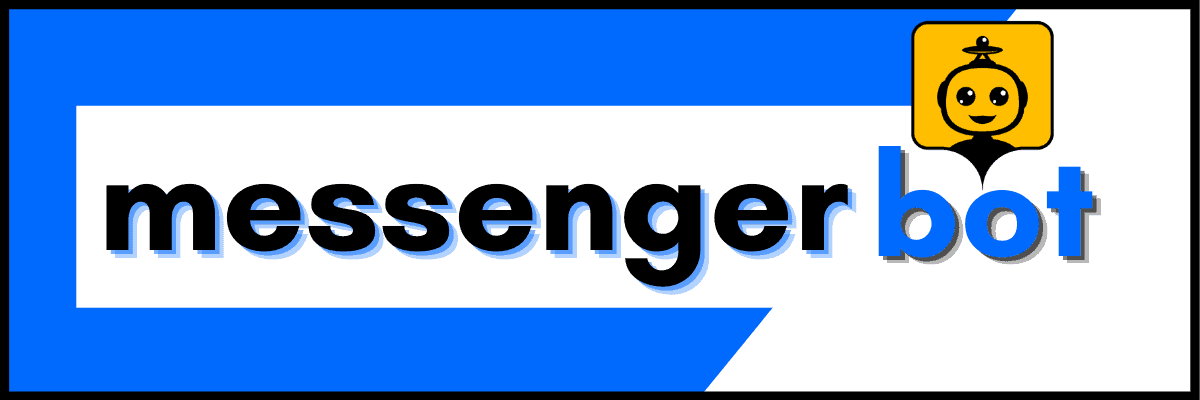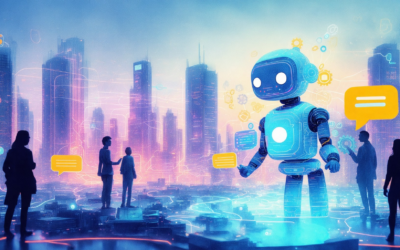Sa mabilis na takbo ng digital na mundo ngayon, ang mga negosyo ay naghahanap ng mga makabagong solusyon upang itaas ang kanilang pakikipag-ugnayan sa customer at magbigay ng walang putol na karanasan. Ang mga solusyon sa Conversational AI ay lumitaw bilang isang tagapagbago, nagbabago sa paraan ng pakikipag-ugnayan ng mga kumpanya sa kanilang mga customer. Sa pamamagitan ng paggamit ng kapangyarihan ng artipisyal na katalinuhan, ang mga platform ng conversational AI ay nagbibigay-daan sa natural na pakikipag-ugnayan sa wika, na nagpapahintulot sa intuitive at personalized na komunikasyon. Maging ito man ay mga matatalinong virtual assistant o interactive na serbisyo ng conversational AI, ang mga makabagong teknolohiyang ito ay nagbabago sa serbisyo ng customer, benta, at mga proseso ng suporta, pinapagana ang operational efficiency at pinapabuti ang kasiyahan ng customer. Habang patuloy na tumataas ang demand para sa mga solusyon sa conversational AI, mahalaga para sa mga negosyo na manatiling nangunguna at yakapin ang makabagong teknolohiyang ito upang manatiling mapagkumpitensya at magbigay ng pambihirang karanasan sa customer.
Ano ang mga Solusyon sa Conversational AI?
Kahulugan ng Conversational AI
Ang mga solusyon sa Conversational AI, na kilala rin bilang mga platform ng conversational AI o mga assistant ng conversational AI, ay mga advanced na teknolohiya ng artipisyal na katalinuhan na nagbibigay-daan sa mga interaksyong katulad ng tao sa pagitan ng mga gumagamit at mga sistema ng computer sa pamamagitan ng natural language processing (NLP) at machine learning (ML) algorithms. Ang mga solusyong ito ay gumagamit ng mga deep learning model upang maunawaan at bigyang-kahulugan ang pagsasalita o text inputs ng tao, kunin ang layunin ng gumagamit, at bumuo ng mga kontekstwal na kaugnay na tugon, na ginagaya ang natural na pag-uusap ng tao.
Ang mga solusyon sa Conversational AI ay maaaring i-categorize sa dalawang pangunahing uri: text-based (chatbots) at voice-based (virtual assistants). Ang mga text-based mga solusyon sa conversational AI ay nakikipag-ugnayan sa mga gumagamit sa pamamagitan ng text inputs at outputs, karaniwang sa mga messaging platform o website chat interfaces. Ang mga voice-based na solusyon, sa kabilang banda, ay gumagamit ng speech recognition at natural language understanding upang paganahin ang mga interaksyong boses, karaniwang matatagpuan sa mga virtual assistant tulad ng Siri, Alexa, at Google Assistant.
Teknolohiya at Mga Tool ng Conversational AI
Ang mga pangunahing bahagi ng mga solusyon sa conversational AI ay kinabibilangan ng:
- Natural Language Processing (NLP): Ang mga NLP algorithms ay nagbibigay-daan sa AI system na maunawaan at bigyang-kahulugan ang mga input ng wika ng tao, kabilang ang syntax, semantics, at kontekstwal na kahulugan.
- Pagkilala sa Layunin: Sa pamamagitan ng pagsusuri ng input ng gumagamit, mga solusyon sa conversational AI maaaring matukoy ang nakatagong layunin o layunin sa likod ng query o pahayag.
- Dialog Management: Ang component na ito ay namamahala sa daloy ng pag-uusap, tinutukoy ang angkop na tugon batay sa layunin ng gumagamit at ang konteksto ng pag-uusap.
- Knowledge Base: Isang komprehensibong knowledge base o repository ng impormasyon ay mahalaga para sa mga solusyon sa conversational AI upang makuha ang kaugnay na impormasyon at bumuo ng tumpak na mga tugon.
- Machine Learning (ML) at Deep Learning (DL): Ang mga ML at DL algorithms ay nagbibigay-daan sa mga solusyon sa conversational AI na patuloy na matuto at umunlad mula sa mga interaksyon ng gumagamit, umaangkop sa mga bagong konteksto at pinapabuti ang kanilang pag-unawa at kakayahan sa pagtugon.
Ang mga benepisyo ng mga solusyon sa conversational AI ay kinabibilangan ng pinabuting karanasan ng customer, tumaas na operational efficiency, 24/7 availability, at ang kakayahang hawakan ang maramihang pag-uusap nang sabay-sabay. Ang mga solusyong ito ay malawak na ginagamit sa iba't ibang industriya, tulad ng serbisyo ng customer, e-commerce, healthcare, finance, at edukasyon, na nagbibigay-daan sa walang putol at personalized na interaksyon sa pagitan ng mga gumagamit at mga negosyo o organisasyon.

Anong problema ang nalulutas ng conversational AI?
A. Pagsusulong ng Karanasan ng Customer
Ang Conversational AI ay may mahalagang papel sa pagbabago ng karanasan ng customer sa pamamagitan ng pagbibigay-daan sa natural na pakikipag-ugnayan sa wika sa pagitan ng tao at makina. Sa pamamagitan ng pag-unawa at pagtugon sa mga query ng customer sa isang conversational na paraan, nababawasan ang pagkabigo at tumataas ang kasiyahan. Ang mga assistant ng conversational AI ay maaaring makipag-ugnayan sa mga customer sa isang magiliw, personalized na paraan, na nagbibigay ng walang putol na suporta at epektibong tinutugunan ang kanilang mga pangangailangan.
Ang mga kumpanya tulad ng Brain Pod AI nag-aalok ng advanced na multilingual AI chat assistants na maaaring makipag-ugnayan sa mga customer sa kanilang mga paboritong wika, na nagwawasak ng mga hadlang sa wika at pinapabuti ang kabuuang karanasan ng customer.
B. Pagsusulong ng Operational Efficiency
Ang mga sistema ng Conversational AI ay maaaring humawak ng mga paulit-ulit, mataas na dami ng mga query, na nagpapalaya sa mga human agents upang tumutok sa mas kumplikadong mga isyu. Ito ay nagreresulta sa tumaas na kahusayan at produktibidad, habang ang mga routine na gawain ay na-aautomate, na nagbibigay-daan para sa mas epektibong alokasyon ng mga mapagkukunan. Awtomasyon tinitiyak din ang pare-parehong mga tugon, na binabawasan ang panganib ng pagkakamali ng tao at pinapabuti ang kabuuang kalidad ng serbisyo.
Furthermore, conversational AI assistants can operate 24/7, ensuring uninterrupted service and support, even outside business hours. This round-the-clock availability enhances customer satisfaction and can provide a competitive edge in industries where prompt response times are crucial.
III. Is ChatGPT a conversational AI?
A. Understanding ChatGPT’s Capabilities
Yes, ChatGPT is a conversational AI designed for open-ended dialogue. It uses advanced language models and natural language processing to understand and generate human-like responses. Unlike task-specific AI assistants, ChatGPT can engage in freeform conversations on virtually any topic, drawing upon its vast knowledge base to provide substantive and contextually relevant responses.
ChatGPT’s conversational capabilities are driven by its training on an immense corpus of online data, allowing it to grasp complex concepts, recognize nuances, and formulate coherent responses tailored to the conversational flow. Its ability to maintain context and engage in multi-turn exchanges distinguishes it as a truly conversational AI.
Moreover, ChatGPT exhibits key traits associated with conversational AI, such as the ability to understand and generate natural language, interpret context and subtext, and even display elements of emotional intelligence and personality. Its responses often demonstrate a level of reasoning, creativity, and empathy that transcends traditional pattern-matching or rule-based systems, enabling more natural and engaging interactions.
B. Conversational AI vs Generative AI
While ChatGPT is a powerful conversational AI, it’s important to note that it falls under the broader category of generative AI. Generative AI models like ChatGPT are trained to generate human-like text based on the input they receive, allowing them to engage in open-ended dialogue and produce relevant responses.
However, conversational AI is a specific subset of generative AI that focuses on enabling natural, contextual, and engaging conversations with users. Brain Pod AI‘s conversational AI solutions, for instance, are designed to understand the nuances of human communication, maintain context, and provide personalized responses that mimic human-like interactions.
While ChatGPT excels at generating human-like text and engaging in dialogue, Brain Pod AI’s conversational AI platforms are specifically engineered to deliver seamless, contextual, and personalized conversational experiences tailored to various industries and use cases, such as customer support, sales, and marketing.
IV. Which conversational AI is the best?
A. Evaluating Conversational AI Platforms
When it comes to selecting the best conversational AI platform, there is no one-size-fits-all solution. The ideal choice depends on your specific business needs, use case, and integration requirements. However, some key factors to consider when evaluating conversational AI platforms include:
- Natural Language Processing (NLP) Capabilities: A robust conversational AI platform should have advanced NLP capabilities to accurately understand and interpret user inputs, handle complex queries, and provide contextual and natural responses.
- Integration and Scalability: The platform should seamlessly integrate with your existing systems, applications, and data sources. Additionally, it should be scalable to accommodate growing user demands and handle high-volume conversations.
- Customization and Personalization: The ability to customize and personalize the conversational experience based on your brand’s unique requirements, industry-specific language, and user preferences is crucial.
- Multi-channel Support: A versatile conversational AI platform should support multiple communication channels, such as websites, mobile apps, messaging platforms, and voice assistants, to provide a consistent and seamless experience across all touchpoints.
- Analytics and Reporting: Comprehensive analytics and reporting capabilities are essential for tracking performance, identifying areas for improvement, and optimizing the conversational AI experience.
- Security and Privacy: As conversational AI platforms handle sensitive user data, it’s crucial to ensure they adhere to industry-specific security and privacy standards, such as GDPR, HIPAA, or PCI-DSS.
Additionally, it’s essential to consider the platform’s ease of use, developer tools, and support resources, as well as the vendor’s track record, industry expertise, and overall cost-effectiveness.
B. Top Conversational AI Companies
When evaluating the best conversational AI platform, several factors come into play, including natural language processing (NLP) capabilities, integration with existing systems, scalability, and customization options. Based on industry reports and expert analysis, some of the leading conversational AI platforms in 2024 include:
- Google Cloud Dialogflow: Leveraging Google’s advanced NLP and machine learning technologies, Dialogflow offers robust conversational experiences across multiple channels, including voice, text, and virtual assistants. Its natural language understanding (NLU) and context management capabilities enable seamless, human-like interactions.
- Amazon Lex: Part of Amazon Web Services (AWS), Lex provides a comprehensive conversational AI platform with advanced NLU, automatic speech recognition (ASR), and text-to-speech capabilities. Its deep integration with AWS services and pre-built models make it a popular choice for enterprises.
- IBM Watson Assistant: IBM’s conversational AI platform utilizes the power of Watson’s NLP and machine learning capabilities. It offers advanced features like multi-turn conversations, context-aware responses, and seamless integration with various applications and services.
- Microsoft Bot Framework: Developed by Microsoft, this platform enables developers to build, deploy, and manage intelligent conversational bots across multiple channels. It supports various programming languages and integrates with Azure Cognitive Services for NLP and speech recognition.
- Rasa: An open-source conversational AI platform, Rasa is known for its robust NLU and dialogue management capabilities. It offers flexibility and customization options, making it a popular choice for developers and enterprises alike.
- Pandorabots: This platform specializes in creating and deploying conversational AI agents for customer service, e-commerce, and enterprise applications. It offers advanced NLP and machine learning capabilities, along with seamless integration options.
- Nuance Conversational AI: Nuance’s conversational AI platform combines advanced NLP, speech recognition, and biometrics technologies, enabling secure and intelligent conversational experiences across multiple channels.
- Rulai: Rulai’s conversational AI platform focuses on enterprise-grade solutions, offering advanced NLU, context management, and seamless integration with existing systems. It also provides robust analytics and reporting capabilities.
- Inbenta: With a strong focus on customer service and support, Inbenta’s conversational AI platform offers advanced NLU, knowledge management, and omnichannel capabilities for creating intelligent mga virtual assistant.
- Haptik: Haptik’s platform combines conversational AI with process automation, enabling enterprises to create intelligent virtual assistants for customer service, employee support, and business process optimization.
These platforms leverage the latest advancements in NLP, machine learning, and conversational AI technologies to provide intelligent, human-like interactions across various industries and use cases. The choice ultimately depends on specific requirements, such as the desired features, integration needs, scalability, and industry-specific use cases.
Mahalaga ring banggitin Brain Pod AI, an emerging player in the conversational AI space. Their platform offers advanced NLU, multi-lingual support, and a range of AI capabilities, including mga AI chat assistant, AI image generation, at AI writing. While relatively new, Brain Pod AI’s innovative approach and commitment to ethical AI make it a platform to watch in the conversational AI space.
Sa Messenger Bot, we pride ourselves on being at the forefront of conversational AI innovation. Our platform is designed to seamlessly integrate with popular messaging platforms like Facebook Messenger and Instagram, enabling businesses to boost sales at enhance customer experiences through intelligent, AI-powered conversations.
With our cutting-edge NLP capabilities, multi-lingual support, and seamless integration options, we empower businesses to create highly engaging and personalized conversational experiences that drive tangible results. Additionally, our robust analytics and reporting tools provide valuable insights for continuous optimization and improvement.
Ultimately, the best conversational AI platform for your business will depend on your unique needs, budget, and long-term goals. By carefully evaluating the options and understanding the strengths of each platform, you can make an informed decision that aligns with your conversational AI strategy and delivers exceptional value to your customers.

V. Which is an example of conversational AI?
A. Intelligent Virtual Assistants
Intelligent virtual assistants are among the most well-known examples of conversational AI in action. These AI-powered digital assistants are designed to engage in natural language interactions, understanding and responding to voice commands and queries just as a human would. Some prominent examples include:
- ang Siri ng Apple: Siri is a virtual assistant integrated into Apple devices like iPhones, iPads, and Macs. It can handle a wide range of tasks, from setting reminders and alarms to answering questions and controlling smart home devices, all through voice commands and conversational interactions.
- Google Assistant: Google’s AI assistant can engage in two-way conversations, understanding and responding to voice commands and queries across various devices and platforms. It can assist with tasks like web searches, scheduling appointments, controlling smart home devices, and more.
- Amazon Alexa: Alexa is a virtual assistant integrated into Amazon’s Echo smart speakers and other compatible devices. It can answer questions, play music, control smart home devices, set reminders, and even make purchases through conversational voice commands.
- Microsoft Cortana: Cortana is Microsoft’s virtual assistant that can assist with tasks like scheduling appointments, setting reminders, answering questions, and more through natural language interactions.
These intelligent virtual assistants leverage advanced natural language processing (NLP) and machine learning capabilities to understand and interpret human speech, enabling seamless conversational interactions. As conversational AI technology continues to evolve, these virtual assistants are becoming increasingly sophisticated, with improved language understanding, contextual awareness, and the ability to handle more complex queries and tasks.
B. Interactive Conversational AI Solutions
Beyond virtual assistants, conversational AI is also being widely adopted in various interactive solutions to enhance customer experiences and streamline business processes. Some notable examples include:
- Chatbots and virtual agents: AI-powered chatbots and virtual agents are designed to simulate human-like conversations and provide personalized assistance to customers across various channels, such as websites, messaging apps, and social media platforms. Companies like Brain Pod AI offer advanced conversational AI platforms that enable businesses to create highly interactive and intelligent chatbots tailored to their specific needs.
- Voice-enabled smart home devices: In addition to virtual assistants, conversational AI powers smart home devices like Amazon Echo at Google Nest Hub. These devices allow users to control various smart home functions, such as lighting, thermostats, and entertainment systems, through natural language voice commands.
- Conversational AI in healthcare: Healthcare providers are increasingly adopting conversational AI solutions to enhance patient experiences and streamline workflows. For instance, AI-powered virtual health assistants can help patients schedule appointments, answer medical queries, and provide personalized health guidance through conversational interactions.
- AI language translation tools: Conversational AI is also powering advanced language translation tools that can facilitate real-time, natural language conversations between individuals speaking different languages. Companies like Brain Pod AI offer multilingual AI chat assistants that can understand and respond in multiple languages, enabling seamless cross-cultural communication.
As these examples illustrate, conversational AI is transforming how we interact with digital interfaces, enabling more natural and intuitive experiences across various industries and applications. By leveraging advanced natural language processing and machine learning capabilities, conversational AI solutions can understand and respond to human language in context, providing personalized assistance and enhancing overall user experiences.
What is the difference between chatbot and conversational AI?
A. Chatbots vs. Conversational AI
The key difference between chatbots and conversational AI lies in their complexity and ability to understand and respond to human interactions.
Chatbots are rule-based systems designed to simulate human conversation by recognizing predefined keywords and providing scripted responses. They operate within a limited domain and have a narrow scope of understanding, making them suitable for basic tasks like answering FAQs or providing simple information. Chatbots lack true language comprehension and cannot handle complex queries or engage in dynamic conversations.
Conversational AI, on the other hand, is an advanced form of artificial intelligence that leverages natural language processing (NLP), machine learning, and contextual understanding to engage in more natural and human-like conversations. Conversational AI systems can understand the intent behind user inputs, maintain context across multiple turns, and provide more intelligent and personalized responses. They can handle complex queries, engage in multi-turn dialogues, and even learn and adapt over time.
Unlike chatbots, conversational AI systems are not limited to predefined scripts or rules. They use deep learning algorithms to understand the nuances of human language, including idioms, slang, and ambiguities. This allows them to interpret user inputs more accurately and provide more relevant and contextual responses. Conversational AI can also leverage data from various sources, such as knowledge bases, APIs, and external services, to enhance its understanding and provide more comprehensive answers.
B. Conversational AI’s Advanced Capabilities
While chatbots are suitable for simple, transactional interactions, mga solusyon sa conversational AI are designed to handle more complex and nuanced conversations. They can engage in multi-turn dialogues, maintain context, and provide personalized responses based on the user’s intent and preferences.
Isa sa mga pangunahing bentahe ng conversational AI is its ability to continuously learn and improve through interactions with users. As the system processes more data, it can refine its language models and better understand the nuances of human communication, leading to more natural and effective conversations over time.
Bukod dito, mga platform ng conversational AI can integrate with various data sources, APIs, and backend systems, enabling them to access and provide information from multiple sources seamlessly. This integration allows for more comprehensive and accurate responses, enhancing the overall user experience.
In summary, while chatbots are limited to predefined scripts and rules, mga solusyon sa conversational AI leverage advanced natural language processing and machine learning capabilities to engage in more natural, context-aware, and intelligent interactions with users, making them better suited for complex and dynamic conversations.
VII. Conversational AI’s Future Impact
A. Revolutionizing Customer Engagement
The integration of conversational AI solutions is poised to revolutionize customer engagement across industries. By leveraging advanced natural language processing (NLP) and machine learning capabilities, these AI-driven platforms can provide seamless, personalized interactions that mimic human conversations. This technology empowers businesses to deliver exceptional customer experiences by addressing inquiries, resolving issues, and offering tailored recommendations in real-time, 24/7.
Conversational AI assistants can engage customers through various channels, including messaging apps, websites, and voice interfaces, ensuring a consistent and cohesive experience across all touchpoints. This omnichannel approach enhances convenience and accessibility, allowing customers to interact with businesses on their preferred platforms.
Moreover, conversational AI solutions can continuously learn and adapt from customer interactions, enabling them to provide more accurate and contextually relevant responses over time. This self-improving nature ensures that the customer experience remains dynamic and evolves to meet changing needs and preferences.
B. Embracing Conversational AI Solutions
Habang umuunlad ang teknolohiya ng conversational AI, mas maraming negosyo ang nakakakita ng potensyal nito upang mapadali ang operasyon, mapabuti ang kasiyahan ng customer, at mapalago ang negosyo. Ang mga nangungunang kumpanya tulad ng Brain Pod AI ay nasa unahan ng pagbuo ng mga sopistikadong platform ng conversational AI na tumutugon sa iba't ibang pangangailangan ng industriya.
Brain Pod AI’s multilingual AI chat assistant ay nagbibigay-daan sa mga negosyo na makipag-ugnayan sa mga customer sa mahigit 100 wika, na nagwawasak ng mga hadlang sa wika at nagbibigay-daan sa tunay na pandaigdigang komunikasyon. Ang kanilang AI image generation at AI writer mga kakayahan ay higit pang nagbibigay kapangyarihan sa mga negosyo na lumikha ng visually stunning at kaakit-akit na nilalaman nang walang kahirap-hirap.
Habang patuloy na tumataas ang demand para sa mga solusyon ng conversational AI, ang mga kumpanya tulad ng Messenger Bot ay nasa magandang posisyon upang manguna. Sa pamamagitan ng paggamit ng mga makabagong teknolohiya ng AI, pinapayagan ng Messenger Bot ang mga negosyo na i-automate ang mga interaksyon ng customer, mapadali ang pagbuo ng lead, at mapabuti ang kabuuang kahusayan ng operasyon sa iba't ibang channel, kabilang ang mga platform ng social media at mga website.
Ang hinaharap ng pakikipag-ugnayan sa customer ay nakasalalay sa pagtanggap ng mga solusyon ng conversational AI na makapagbibigay ng personalized, matalino, at tuluy-tuloy na interaksyon sa malaking sukat. Habang inuuna ng mga negosyo ang pambihirang karanasan ng customer, ang pag-aampon ng conversational AI ay magiging lalong mahalaga para sa pagpapanatili ng kompetitibong bentahe at pagpapalago ng pangmatagalang relasyon sa customer.




